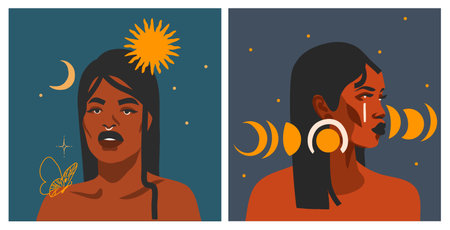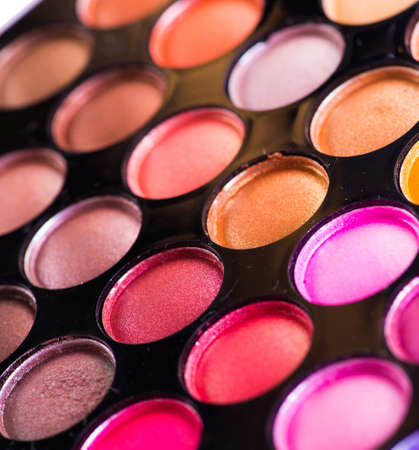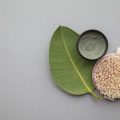Discovering the Difference: Real vs Fake Eyeshadow Palettes
The Indian beauty market is witnessing an explosion of eyeshadow palettes, with both global and local brands launching new collections every season. But as more women in India embrace makeup as part of their daily routine, there’s a growing concern: how to tell the difference between genuine and counterfeit products? Real vs fake eyeshadow palettes have become a hot topic among desi consumers, especially on social media platforms like Instagram and YouTube where beauty influencers share their haul videos and unboxing experiences. Counterfeit palettes often look almost identical to the originals, making it tough for even seasoned shoppers to spot the difference at first glance. Yet, the consequences of picking up a fake product can be serious — from poor pigmentation and patchy blending to skin irritation or even allergic reactions. With online shopping booming across tier-1 cities like Mumbai and Delhi, as well as smaller towns, more Indians are at risk of accidentally buying dupes. For many Indian women, knowing how to distinguish real eyeshadow palettes from fake ones is not just about getting value for money; it’s about ensuring safety, quality, and supporting ethical business practices in a rapidly growing beauty industry.
2. Spotting a Fake: Tips and Red Flags from Indian Beauty Enthusiasts
When it comes to eyeshadow palettes, Indian women have become savvy detectives in the beauty aisles. With the rise of fake products in local markets and even on popular e-commerce platforms, shoppers are sharing their best tips for telling real from fake. Let’s look at some practical advice and local “jugaad” (clever hacks) that Indian beauty enthusiasts swear by.
Packaging Matters: Look Beyond the Glitter
Many Indian women point out that counterfeit palettes often mimic the design but miss subtle details. Check for spelling mistakes, missing holograms, or low-quality printing. Authentic brands like Huda Beauty or Maybelline always have crisp fonts and sturdy packaging, while fakes might feel flimsy or have off-colour prints. Don’t ignore batch numbers and manufacturing details—real products typically include clear labelling and FSSAI or BIS certifications when sold through authorised channels.
Price Checks: Too Good to Be True?
Bargain deals can be tempting, especially with words like “sale” or “discount” splashed across online shops. But as Mumbai-based Priya points out, “If an Urban Decay palette is listed for ₹499 on a local app, it’s definitely sus!” Here’s a quick cheat sheet shared by Delhi makeup lovers:
| Brand | Typical Real Price (INR) | Red Flag Fake Price (INR) |
|---|---|---|
| Huda Beauty | Rs 3,000+ | < Rs 1,000 |
| M.A.C | Rs 4,500+ | < Rs 1,500 |
| Lakmé | Rs 700+ | < Rs 300 |
If you spot deals much lower than these averages, double-check the source!
Local Lingo: Know What to Ask Sellers
In Indian markets—both offline and online—sellers use code words to hint at authenticity. Phrases like “first copy,” “original quality,” or “imported piece” often mean the product is not genuine. Some online resellers even use WhatsApp groups to push fake stock using these terms. As Chennai-based Sneha shares, “Always ask for ‘bill’ and ‘MRP sticker.’ If they dodge this question, walk away.”
By staying alert to packaging flaws, suspiciously low prices, and market-specific language tricks, Indian beauty shoppers can protect themselves from counterfeit eyeshadow palettes—and enjoy safe, stunning looks every time.

Desi Beauty Influencers Speak Out
In the vibrant world of Indian beauty, digital creators and makeup mavens have become trusted voices for millions. Leading Indian makeup artists like Shreya Jain and Komal Pandey, as well as beauty bloggers from cities like Mumbai and Bangalore, are increasingly vocal about their run-ins with fake eyeshadow palettes. These influential women often recount stories of how they once purchased “branded” palettes at irresistible prices—sometimes from local markets, sometimes online—only to discover inconsistencies in texture, pigmentation, or even a strange chemical smell.
For many desi influencers, the shock of using a counterfeit palette went beyond disappointment. Swati Verma, a renowned Delhi-based MUA, shared on her Instagram Stories that a fake Huda Beauty palette caused her eyelids to swell and itch, disrupting an important bridal shoot. Such experiences have compelled these tastemakers to become fierce advocates for authenticity and safety in beauty buys. They regularly educate their followers about spotting tell-tale signs of fakes—like misspelled brand names, flimsy packaging, and unusually low prices.
The impact doesn’t stop at allergic reactions or wasted money. For creators whose livelihood depends on trust and expertise, falling prey to counterfeits can dent professional credibility. Some bloggers have gone so far as to create side-by-side video comparisons between real and fake palettes, highlighting differences in color payoff and blendability. Their honest reviews have not only empowered Indian women to make better buying decisions but also nudged brands and e-commerce platforms to tighten verification processes.
In the ever-evolving Indian beauty landscape, these influencers act as a bridge between brands and consumers—sharing first-hand experiences so others don’t repeat the same mistakes. The collective outcry against fake products is gradually shaping consumer awareness across metros and smaller towns alike, making authenticity a top priority among India’s beauty enthusiasts.
The Risks: Health and Pocket Woes
When it comes to fake eyeshadow palettes, Indian women have real stories to tell—many of which are cautionary tales about the dangers lurking behind those pretty packaging. From allergic reactions to wasted money, the risks run deeper than you might think.
Skin Reactions: Not Just a Bad Makeup Day
Priya from Mumbai recalls, “I bought a palette online because it was so affordable. After using it for two days, my eyelids started itching and swelling. I had to visit a dermatologist and spent more on treatment than the palette itself.” This isn’t an isolated incident—across India, women are reporting rashes, redness, and even infections after using counterfeit makeup products.
Common Skin Issues Reported by Indian Women
| Symptom | Percentage of Users Affected* |
|---|---|
| Redness & Irritation | 58% |
| Swelling | 34% |
| Rashes | 26% |
| Eye Infections | 12% |
*Based on anecdotal surveys in beauty forums and social media groups in India.
Poor Quality: The Looks That Don’t Last
Sneha from Delhi shares, “The colours looked vibrant in the box, but on my skin, they were dull and patchy. They faded within an hour! I felt cheated.” Fake palettes often lack pigmentation, blend poorly, and may contain unknown fillers, putting both your look and safety at risk.
The Real Cost: Financial Losses Add Up
Many consumers believe they’re saving money by opting for dupes or fakes, but the reality is quite different. Here’s how the cost stacks up:
| Purchase Type | Average Spend (INR) | Additional Costs* |
|---|---|---|
| Fake Palette | 400 | Treatment (up to 1500) |
| Real Palette (Budget Brand) | 1200 | Usually none |
*Includes doctor visits, medication, or replacement costs as reported by users.
Bargain or Blunder?
The consensus among Indian beauty lovers is clear: what seems like a steal can end up costing much more—in health expenses and lost confidence. As Anjali from Bengaluru puts it, “That one fake palette taught me a lesson for life. Now I always check authenticity before buying any makeup.”
5. Why Fake Products Thrive in Indias Online Bazaars
In the heart of India’s bustling digital marketplace, fake eyeshadow palettes have found fertile ground to thrive. The explosive growth of social commerce platforms—where beauty influencers showcase products through reels and live videos—has made it easier than ever for counterfeit makeup to slip into everyday conversations and shopping carts. For many Indian women, especially in tier-2 and tier-3 cities, these platforms present both an opportunity to access trending international brands and a risk of encountering cleverly disguised fakes.
The Allure of Local E-Marketplaces
Local e-marketplaces like Flipkart, Snapdeal, and even WhatsApp or Instagram-based sellers often feature irresistible deals on popular eyeshadow palettes. These deals are typically accompanied by user reviews, influencer endorsements, and flashy discounts that make the products look genuine. However, the lack of strict verification processes allows unscrupulous vendors to list counterfeit palettes alongside authentic ones, blurring the lines for unsuspecting buyers.
Flash Deals & FOMO: A Dangerous Mix
One of the driving forces behind the rampant sale of fake beauty products is the culture of flash sales and limited-time offers. Indian consumers, drawn by lightning deals and festive season flash sales, often rush their purchase decisions due to fear of missing out (FOMO). Sellers exploit this urgency by flooding the market with lookalike palettes at throwaway prices. By the time customers realise they’ve received a fake product—often after experiencing skin irritation or poor colour payoff—the seller may have disappeared or rebranded under a new name.
The Role of Social Proof & Peer Influence
Word-of-mouth remains powerful in India’s social fabric. When friends, relatives, or online communities post about snagging luxury-looking eyeshadow palettes at bargain rates, it creates a ripple effect. Many Indian women admit that seeing positive feedback—even if it’s manipulated—increases their trust in lesser-known sellers. Social proof is further amplified by micro-influencers whose content feels relatable but sometimes lacks transparency regarding product authenticity.
Lack of Consumer Awareness & Regulation
Despite increasing digital literacy, there is still a significant gap in consumer awareness regarding how to identify fake makeup products. Regulatory oversight struggles to keep pace with the dynamic nature of online bazaars, leaving space for counterfeits to circulate freely. Until platforms step up authentication measures and consumers become more vigilant, India’s love affair with affordable beauty will continue to be shadowed by the dangers of fake eyeshadow palettes.
Empowering the Indian Consumer: Guidance and Community Support
Building Trust Through Shared Experiences
The fight against counterfeit eyeshadow palettes in India is not one that women face alone. Across social media platforms and beauty forums, Indian beauty enthusiasts are coming together to share their stories, spot fake products, and offer crucial guidance. From Instagram reels exposing dud palettes to YouTube tutorials on how to verify batch codes, real-life experiences empower more Indian women to recognise the difference between genuine and fake makeup.
Resources for Safe & Informed Purchases
Several organisations and online communities have emerged to support Indian consumers:
Online Beauty Forums and Facebook Groups
Groups like “Indian Makeup & Beauty Addicts” on Facebook or Reddit’s r/IndianMakeup help members ask questions, post product photos for verification, and exchange tips about trusted sellers.
Consumer Awareness Campaigns
Platforms such as Consumer VOICE India regularly publish guidelines on spotting fake cosmetics and report marketplaces known for distributing counterfeits.
Verified E-commerce Platforms
Shopping from authorised retailers such as Nykaa, Myntra, Sephora India, or directly from brand websites remains the safest route. Look for “authenticity guaranteed” badges, customer reviews mentioning packaging details, and check if the platform participates in anti-counterfeit initiatives.
Pro Tip:
If a deal seems too good to be true—especially on lesser-known shopping apps or Instagram resellers—it probably is! Always cross-check with fellow beauty lovers before buying.
Together Towards a Safer Beauty Market
The collective vigilance of Indian women, supported by community-driven resources, has created a robust first line of defence against fake eyeshadow palettes. By staying informed and connected, Indian consumers can continue to demand authenticity—and support each other in making safer, smarter beauty choices every day.


